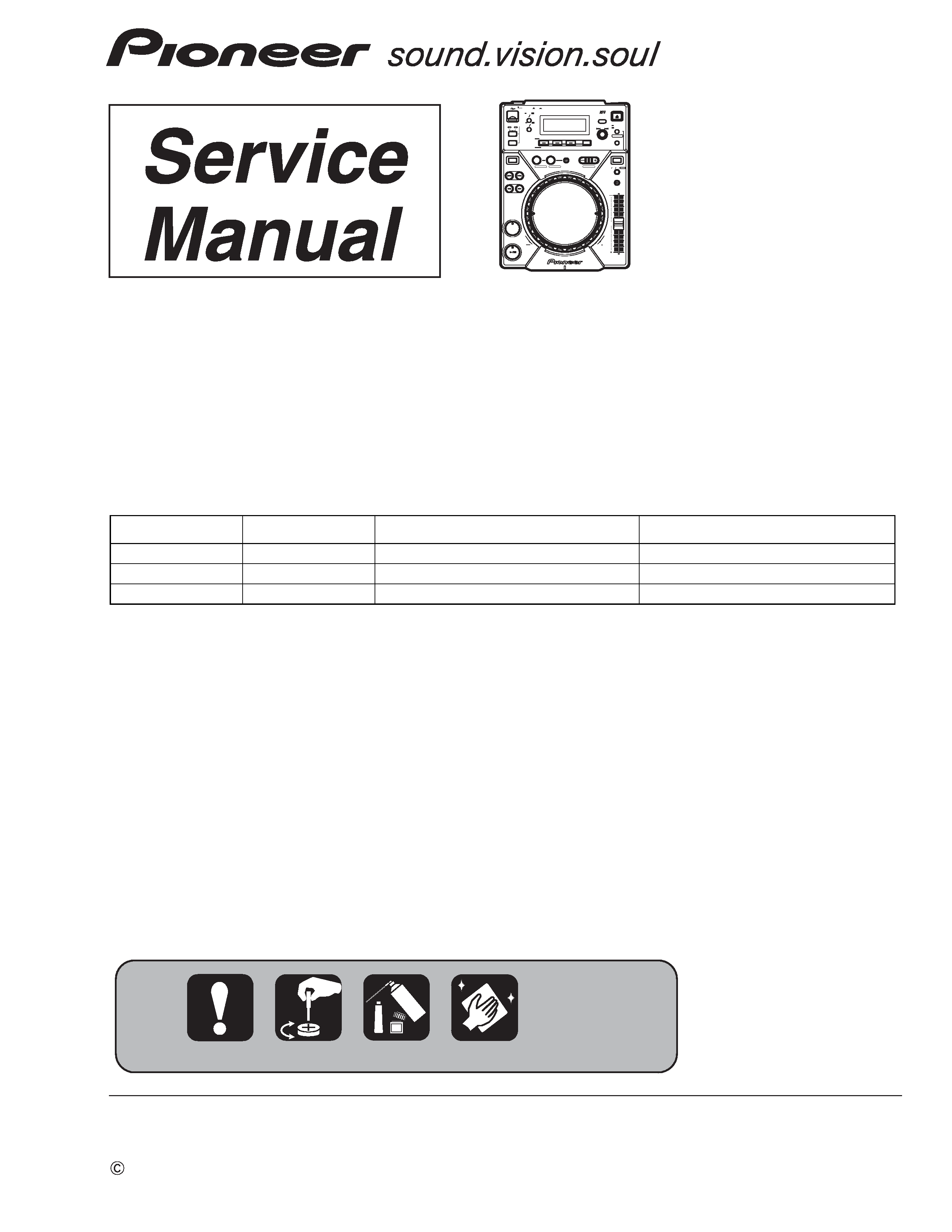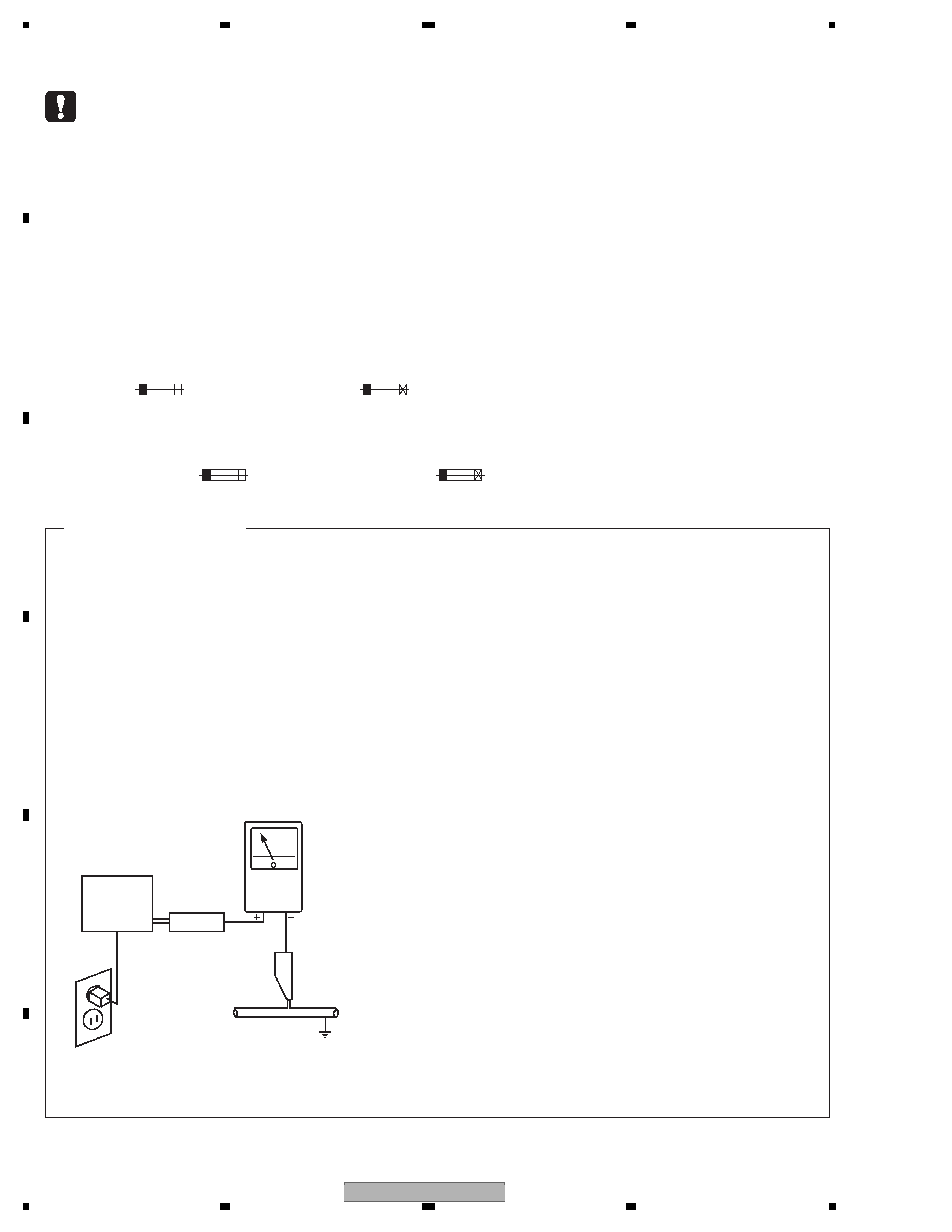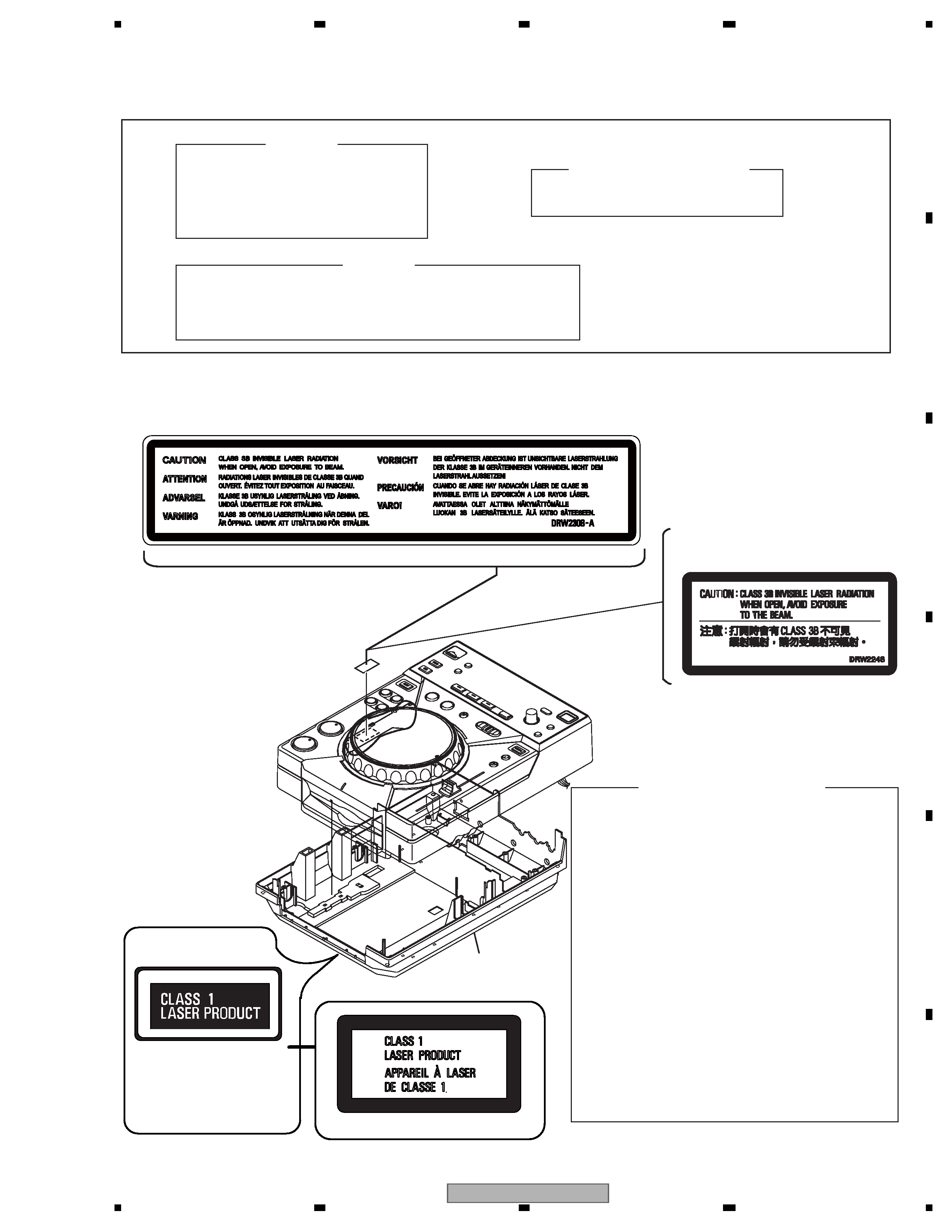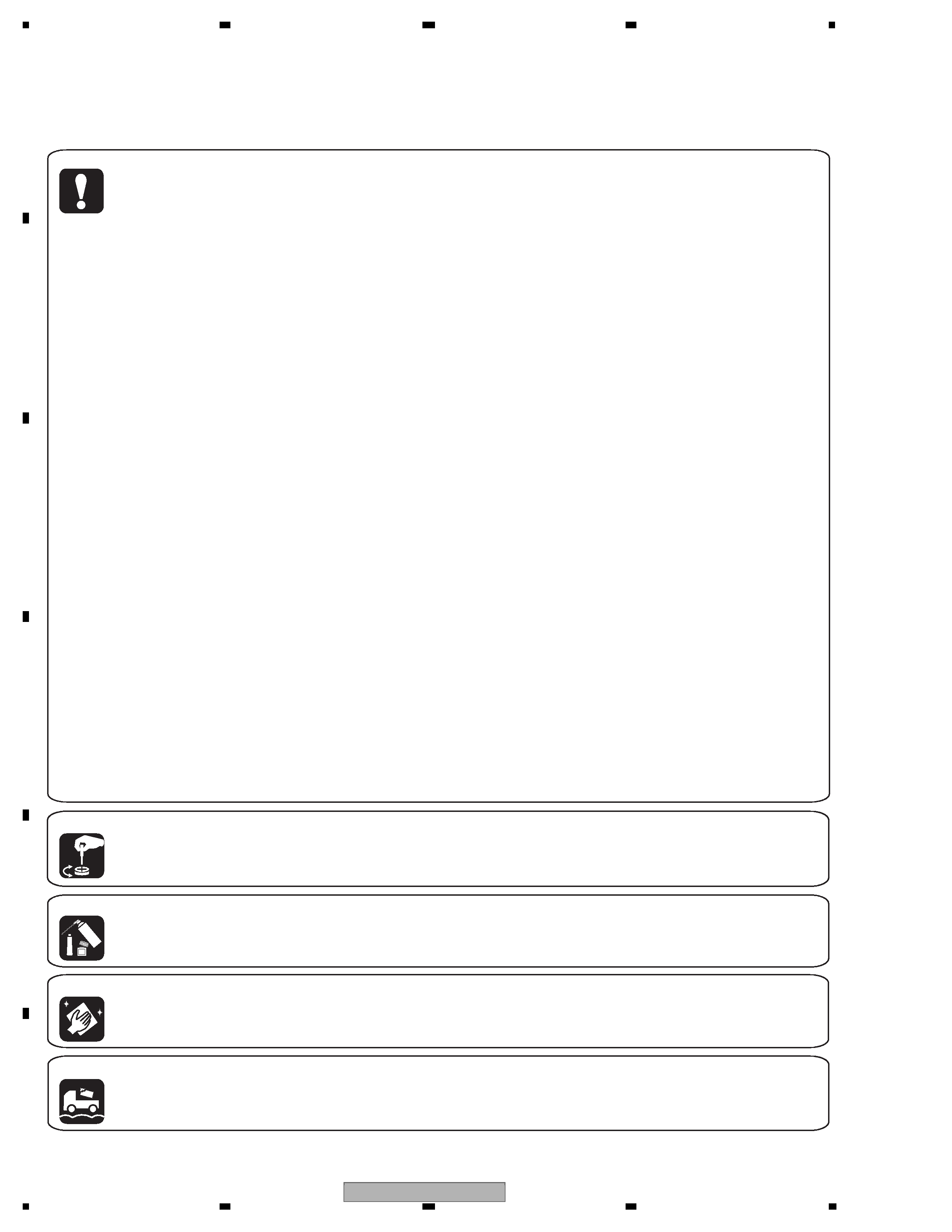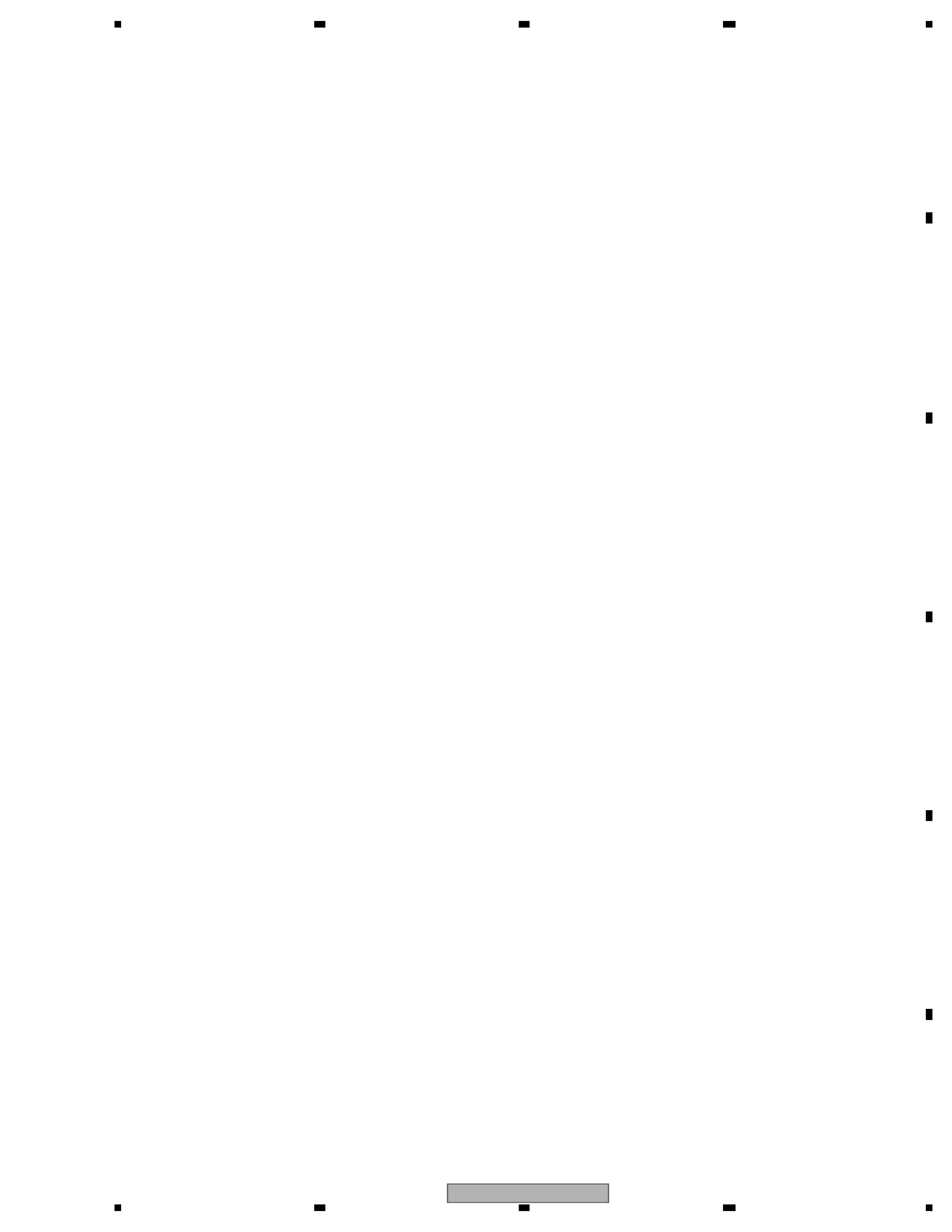
CDJ-400
5
5
678
56
7
8
C
D
F
A
B
E
CONTENTS
SAFETY INFORMATION .....................................................................................................................................2
1. SERVICE PRECAUTIONS ................................................................................................................................6
1.1 NOTES ON SOLDERING ...........................................................................................................................6
2. SPECIFICATIONS.............................................................................................................................................7
2.1 ACCESSORIES..........................................................................................................................................7
2.2 SPECIFICATIONS ......................................................................................................................................8
2.3 DISC USABLE WITH THIS UNIT ...............................................................................................................9
2.4 PANEL FACILITIES...................................................................................................................................11
3. BASIC ITEMS FOR SERVICE ........................................................................................................................14
3.1 CHECK POINTS AFTER SERVICING .....................................................................................................14
3.2 PCB LOCATIONS .....................................................................................................................................15
3.3 JIGS LIST .................................................................................................................................................16
4. BLOCK DIAGRAM ..........................................................................................................................................18
4.1 OVERALL WIRING DIAGRAM .................................................................................................................18
4.2 OVERALL BLOCK DIAGRAM ..................................................................................................................20
5. DIAGNOSIS ....................................................................................................................................................22
5.1 CHECKING THE PICKUP ASSY..............................................................................................................22
5.2 POWER ON SEQUENCE.........................................................................................................................23
6. SERVICE MODE .............................................................................................................................................24
6.1 OVERVIEW OF SERVICE MODE ............................................................................................................24
6.2 CHECK MODE OPERATION....................................................................................................................24
7. DISASSEMBLY ...............................................................................................................................................32
8. EACH SETTING AND ADJUSTMENT ............................................................................................................39
9. EXPLODED VIEWS AND PARTS LIST ..........................................................................................................40
9.1 PACKING SECTION .................................................................................................................................40
9.2 EXTERIOR SECTION ..............................................................................................................................42
9.3 CONTROL PANEL SECTION...................................................................................................................44
9.4 JOG DIAL SECTION ................................................................................................................................46
9.5 SLOT-IN MECHANISM SECTION ............................................................................................................48
10. SCHEMATIC DIAGRAM................................................................................................................................50
10.1 MAIN ASSY (1/2)....................................................................................................................................50
10.2 MAIN ASSY (2/2)....................................................................................................................................52
10.3 CNCT and SLMB ASSYS .......................................................................................................................54
10.4 PNLB ASSY............................................................................................................................................56
10.5 JACB ASSY ............................................................................................................................................58
10.6 REGB and ACIN ASSYS ........................................................................................................................60
10.7 JOGB, TCHB and SW POWER SUPPLY ASSYS ..................................................................................62
10.8 VOLTAGES .............................................................................................................................................64
10.9 WAVEFORMS.........................................................................................................................................66
11. PCB CONNECTION DIAGRAM ....................................................................................................................71
11.1 TCHB ASSY ...........................................................................................................................................71
11.2 MAIN, CNCT, SLMB and JACB ASSYS .................................................................................................72
11.3 PNLB ASSY............................................................................................................................................76
11.4 REGB ASSY ...........................................................................................................................................80
11.5 JOGB and ACIN ASSYS ........................................................................................................................82
12. PCB PARTS LIST..........................................................................................................................................84







